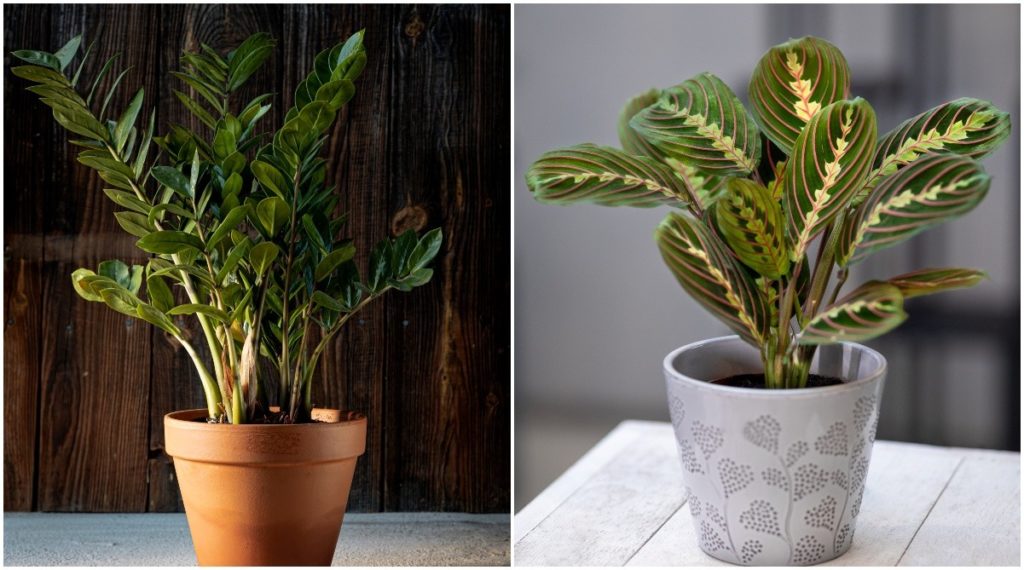
You know when you go to someone’s house for the first time, and they have a great patio or a massive kitchen, and in your head, you start remodeling your place a little bit?
Nothing gives me a case of home-envy, more than lots of bright, natural sunlight.
I begin imagining all of the gorgeous plants I could have in a house blessed with tons of natural light. It would be a veritable jungle if I had my way.
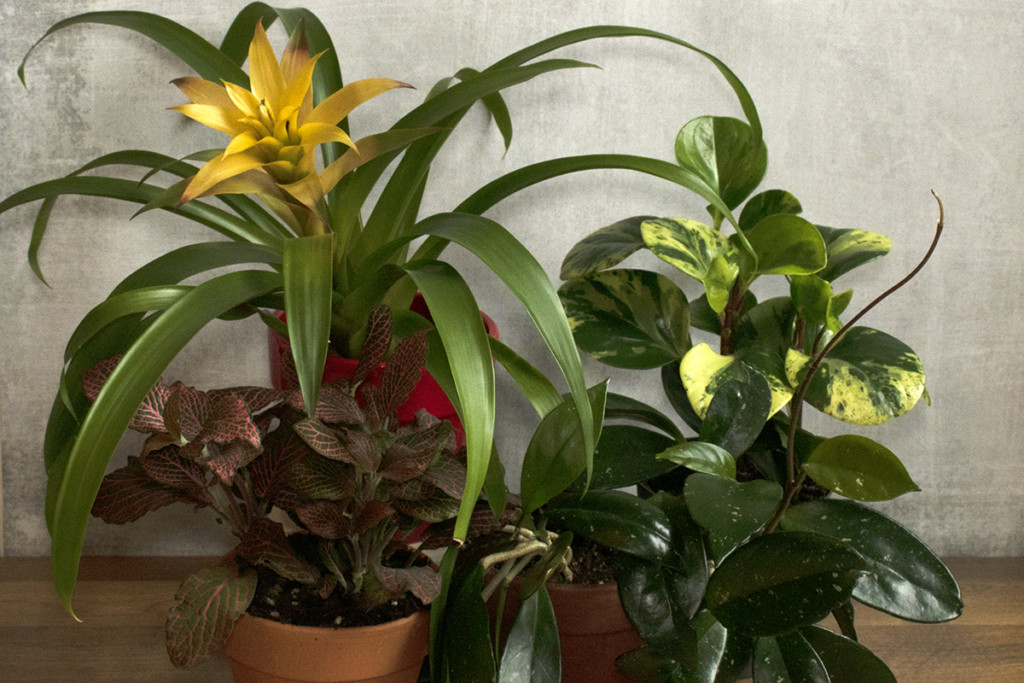
Alas, for most of us, we’re lucky to have one room with good light or maybe just a couple of windows. But that doesn’t mean we can’t enjoy having beautiful, green houseplants gracing our home too.
Or perhaps you’re just looking for the perfect plant to spruce up your desk at work, and all you’ve got is overhead fluorescent lights.
I think you’ll find there are plenty of low-light loving houseplants out there.
Let’s take a look at some of your low-light plant options.
1. Monstera
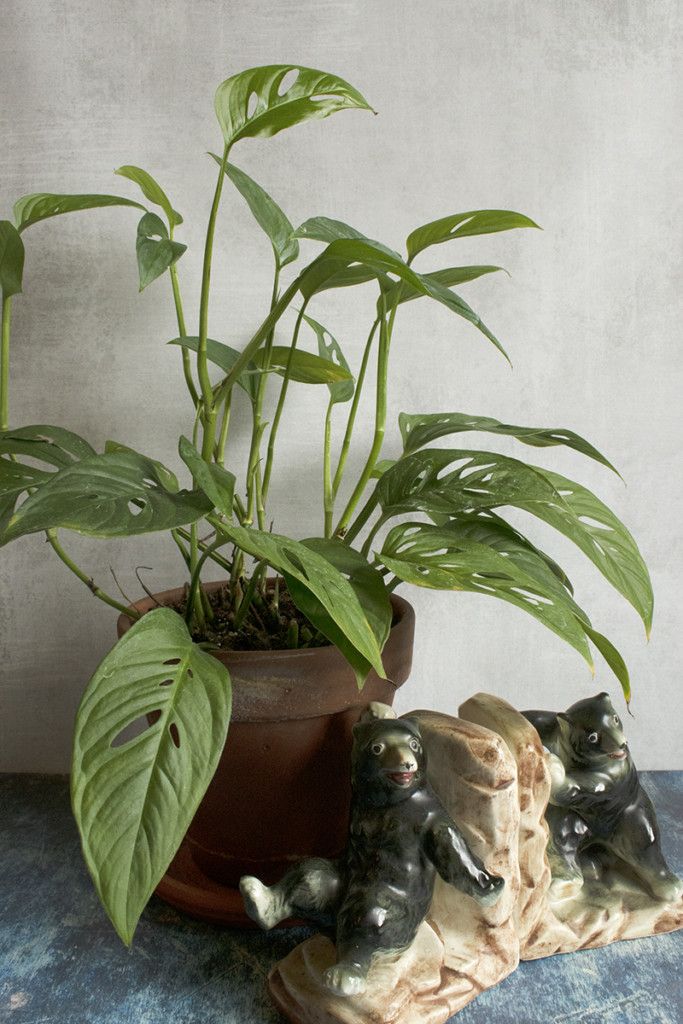
Whether kept small and compact or allowed to climb and grow huge, the Monstera is a beautiful plant that evokes the feeling of the tropics in any room.
It’s also known as the swiss cheese plant, because of its naturally occurring holes, or slits, in the leaves. In its smaller, immature form, some of the leaves may not have any holes.
In its natural habit, the Monstera climbs neighboring trees using aerial roots to cling to the bark. As they get bigger, the leaves can reach 18” across, and the holes in the plants become more significant, some reaching nearly to the central vein of each leaf.
This feature that makes these plants so pretty helps them to withstand hurricane-force winds in their natural tropical habitat. Nature’s pretty cool, right?
You generally see either the Monstera deliciosa, which looks best if you let it climb or the Monstera adansonii, which looks equally lovely as a hanging plant.
If you want larger leaves, you’ll need to give the Monstera something to climb, like a coir moss pole. Water your Monstera when the top inch or so of soil is dry, and mist the aerial roots to encourage climbing.
The next three plants are from the Marantaceae family, which are all commonly known as prayer plants. These unique houseplants move their leaves throughout the day, sometimes standing straight up like folded hands, hence their nickname. (I could spend hours watching time-lapse videos of prayer-plants.)
They are quite happy in low-light, as bright light makes their gorgeous leaf markings fade.
Plants in the Marantaceae family have a reputation for being a little fussy. They prefer humid, warm environments, and enjoy having their leaves misted daily. They require regular fertilizing during their growth period. And don’t let your Marantaceae dry out completely between watering.
However, despite their high-maintenance needs, their gorgeous foliage and dancing leaves make them worth the extra effort.
2. Calathea
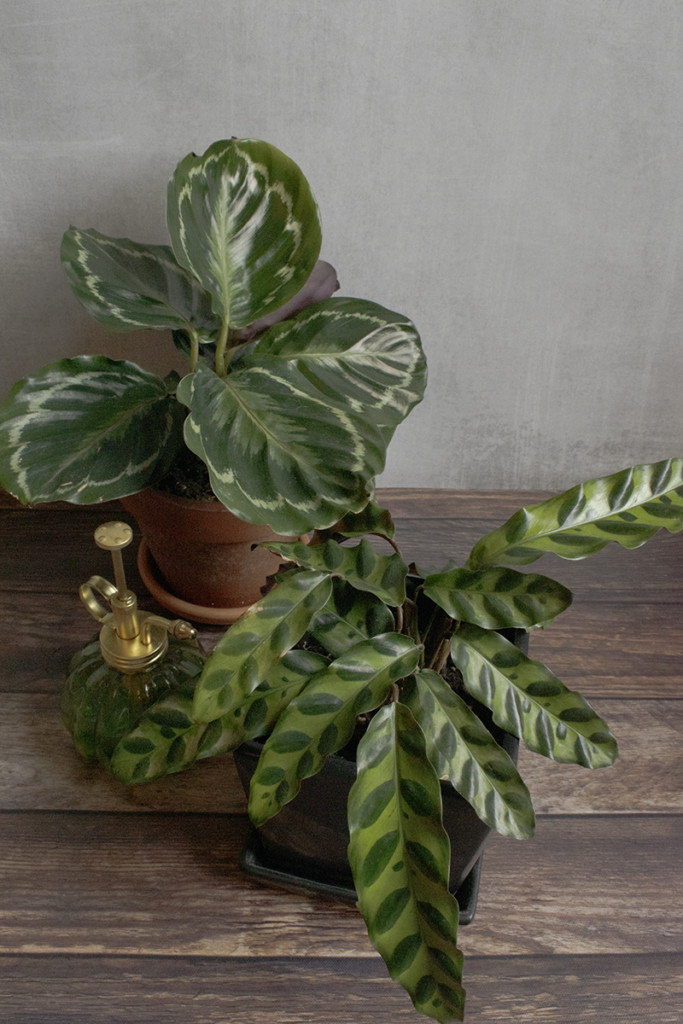
There are numerous varieties of Calathea with a variety of leaf shapes from oblong, to wide and round, to long and spikey.
The rattlesnake plant is a particular favorite with its bold markings and long ruffled leaves. And the Calathea ‘Medallion’ is an excellent choice with its deep emerald leaves, flashing their purple undersides throughout the day.
3. Maranta
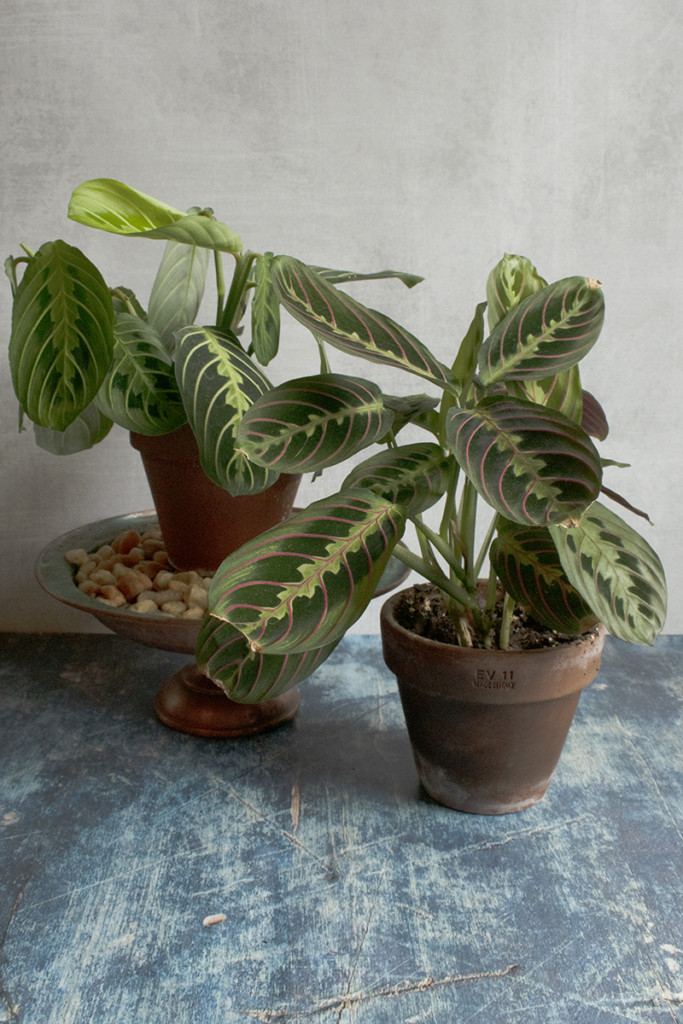
Marantas are by far my favorite houseplants. (Shh, don’t tell my African violets.)
In my experience, they seem to be the most active of the prayer plants, drastically moving their leaves throughout a single day. The beauties certainly know how to put on a show.
4. Hoya
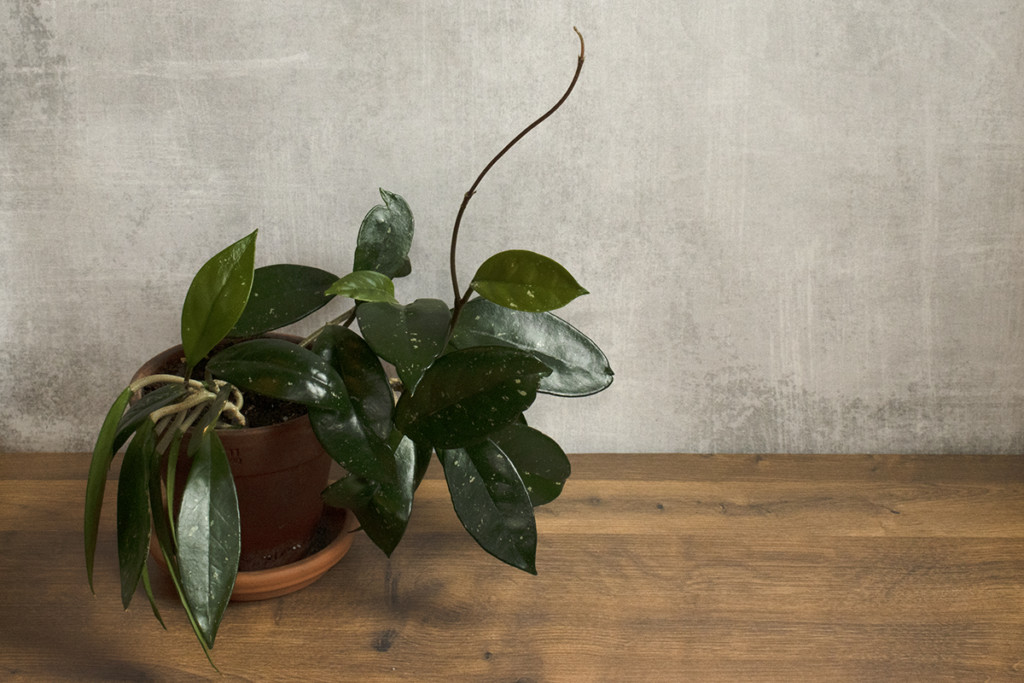
The humble Hoya is a native of Asia and boasts well over 500 species. The leaves are often fleshy with a slight sheen to them, hence their common name of the wax plant.
Hoyas are very forgiving plants and will do just fine in a low-light area, even thriving. With proper care, these plants will reward you with showy blooms in the summer.
Many Hoyas are climbers; you can train them to grow on a decorative wire trellis. They look equally beautiful as a hanging plant.
5. Arrowhead Plant
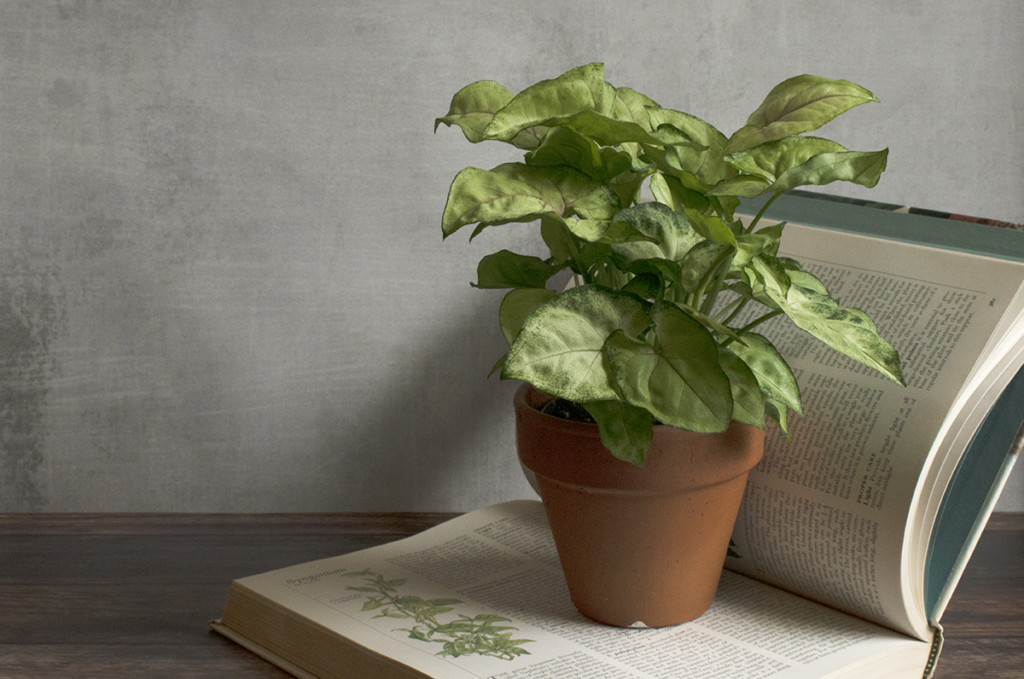
The arrowhead plant is an excellent low-light option. As their name implies, the leaves are an arrowhead shape with an almost leathery texture.
These plants are very forgiving in their care conditions and can bounce back if you forget to water it. However, they do best in a humid environment, put them on a pebble tray or near a humidifier to keep them happy.
For the best low-light option, choose an arrowhead plant that has less variegation and more green coloring overall. The variegated leaves tend to fade without brighter light.
This is another example of a plant that changes its leaf shape as it matures.
Arrowheads are aerial root climbers, much like the Monstera. Put them in a hanging basket or give them a structure to climb, and you’ll see the leaves grow larger over time.
6. Baby Rubber Plant
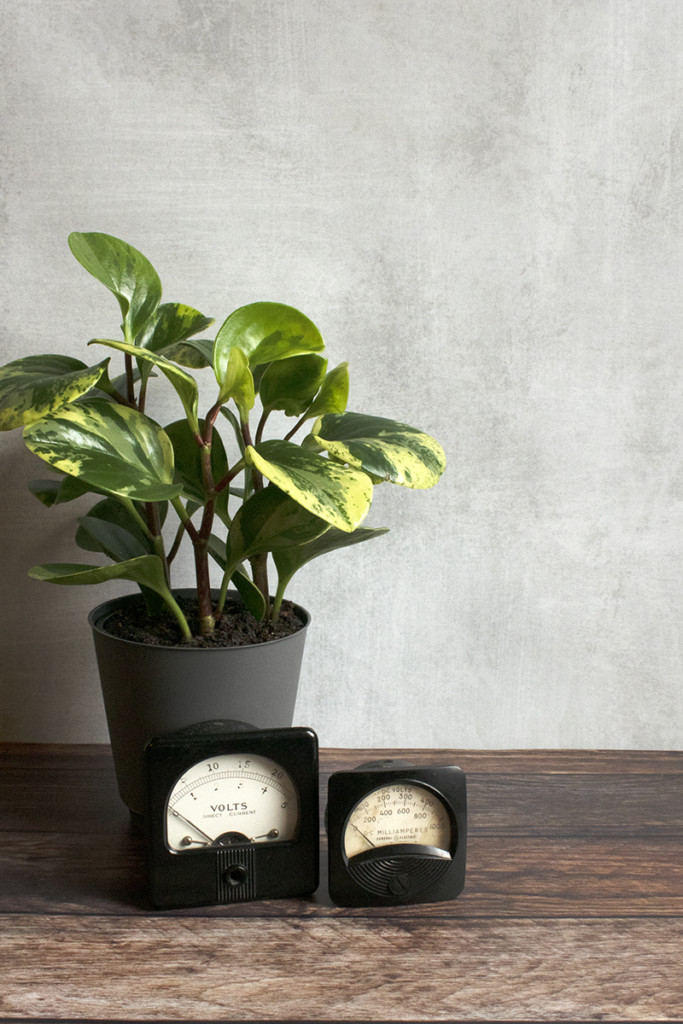
The baby rubber plant, or Peperomia obtusifolia, is quite unlike other peperomias with its tall, sturdy stalks and thick rubbery leaves.
Despite the name, it’s no relation to the actual rubber-producing Hevea brasiliensis. Their rounded leaves make for a nice change compared to a lot of other plants.
These Peperomia will grow to be around a foot high, either all green with slightly purplish stems or in a cream and green variegated pattern. The new leaves of the variegated start out almost yellow, but fade into the creamy white as they grow.
The fastest way to kill one of these plants is to overwater it. (Not that I’ve ever done that.) Let the Peperomia obtusifolia dry out between watering, and use a well-draining potting mix to keep it happy.
Like all Peperomia, they have a characteristic ‘flower,’ which is a long stalk with a green tip, sometimes called a ‘mouse tail.’ They always look so friendly in bloom, as if they’re putting up tiny hands to wave hello.
7. ZZ Plant
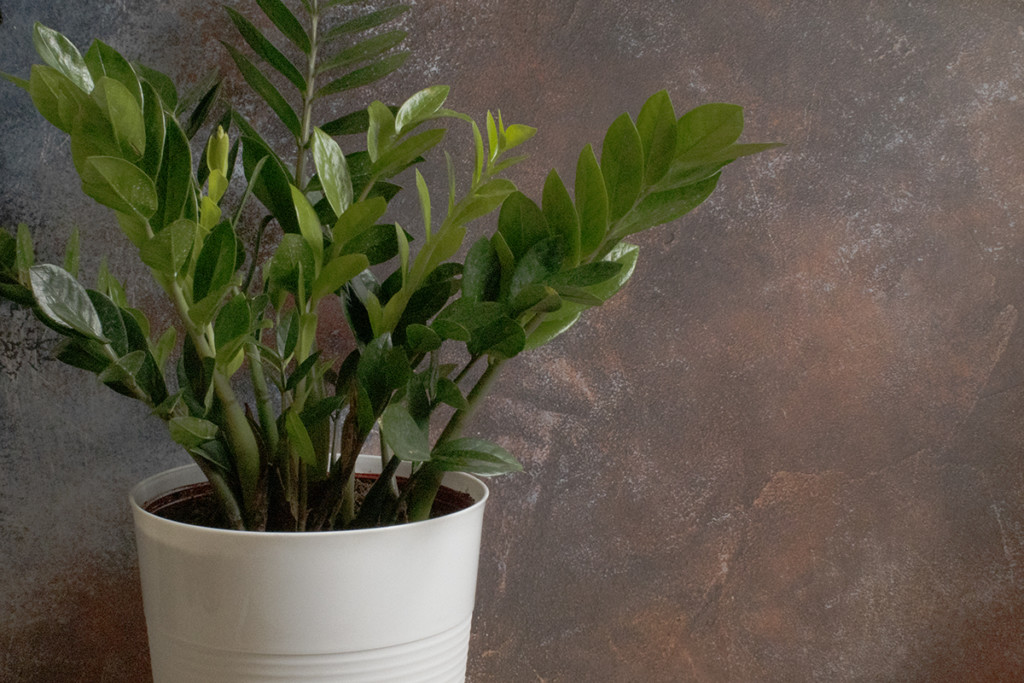
The Zamioculcas zamiifolia, or as its friends call it, ZZ plant, is a low-light, easy-care champ.
Zamioculcas zamiifolia is the plant version of your super chill friend who’s “just happy to be here.”
ZZ plants will put out new growth even in low-light situations. And talk about hardy, they also made it on our Hard to Kill Houseplant list.
The ZZ plant is a perfect low-light plant if you’re looking for something on the larger side. It doesn’t require all the fuss of a larger climbing plant. And it looks equally lovely on a table or in a large pot on the floor.
Because of its easy-care nature and impressive foliage, the Zamioculcas zamiifolia is the perfect plant to give as a gift.
8. Nerve Plant
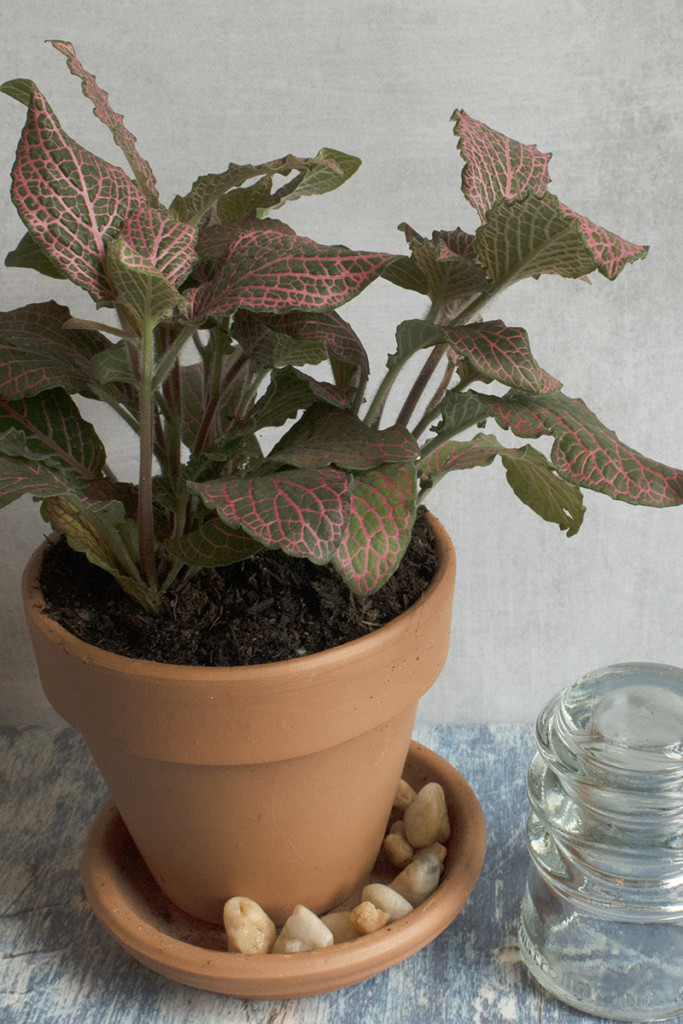
The nerve plant is native to the rainforests of South America, where it creeps along the lush jungle floor, down in the humid darkness far below the canopy overhead. If you can recreate its natural habitat, you’ll have one stunning and beautiful houseplant.
The nerve plant gets its name for its myriad of striated veins across dark green leaves. The veins are usually pink or white, and absolutely striking. While it is a low-light loving plant, it does require warmth and humidity to flourish. You’ll want to provide a pebble tray and mist its leaves. Because of its desire to be kept warm and damp, the nerve plant is a great terrarium dweller.
The Fittonia albivenis or nerve plant remains relatively compact when kept as a houseplant.
Here’s our total care guide for the nerve plant (fittonia).
9. Spider Plant
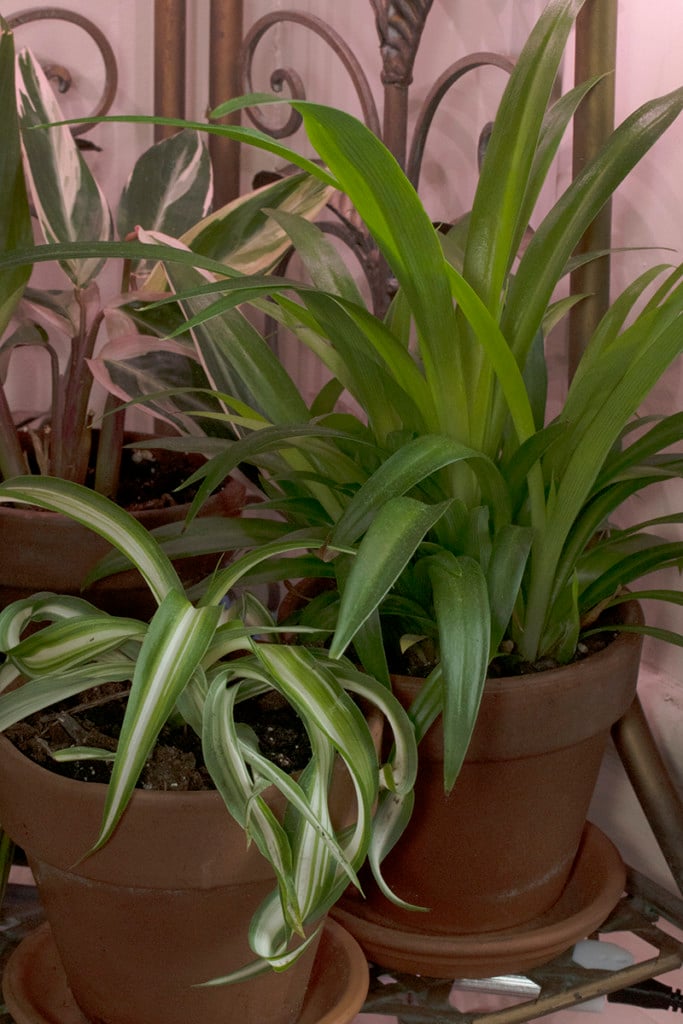
Alright, let’s just agree that everyone needs a spider plant. These little guys are so easy to care for and do a fantastic job of cleaning the air in your home. They handle nearly any lighting situation well, and the variegated varieties will keep their color better out of bright light.
Spider plants will put out numerous pups each year, which are easily propagated directly in soil. You could populate your entire house with beautiful spider plants using just one plant and the new pups it produces.
So, if you’re looking for low-light and economical, the Chlorophytum comosum or spider plant is your go-to.
10. Bromeliad
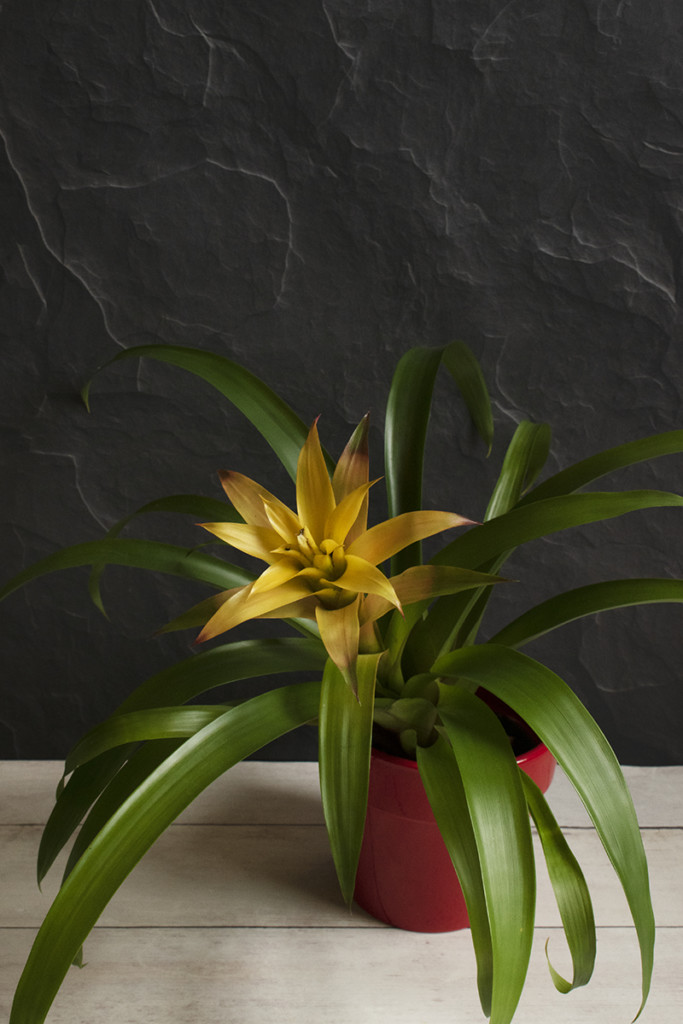
The plant family known as Bromeliaceae, commonly grows in low-light conditions, much like the nerve plant. In their natural habitat, you will find them on the dark forest floor of the jungle. If their shape seems oddly familiar, it’s probably because you’ve seen its cousin in the kitchen – the pineapple.
The Bromeliaceae guzmania is a popular choice with its large, showy flowers. Once finished blooming, they’ll produce pups that can be grown into new plants.
Bromeliads prefer being watered from overhead, by pouring water directly in the little cup at the top of the plant and allowing the water to flow down through it’s leaves to the soil. Just like it would catch rain in its natural habitat.
Care for these as you would a nerve plant providing lots of humidity and warmth. If you live somewhere that has a cold winter, you’ll need to keep this plant in a warm location and provide it with a pebble tray or keep a humidifier nearby.
11. Pothos
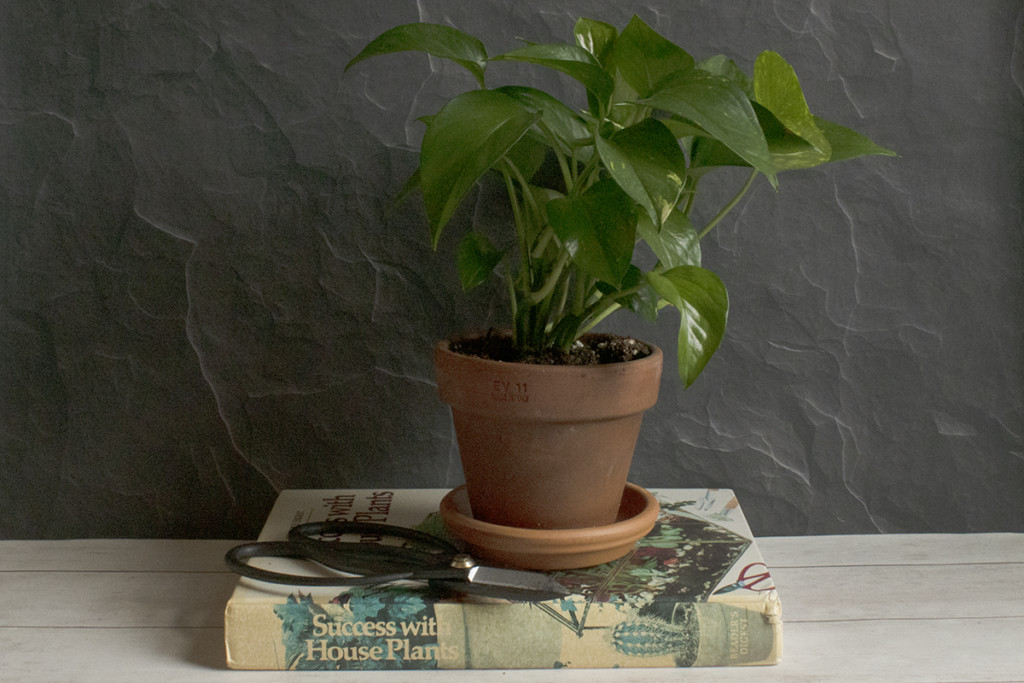
Devil’s ivy, or Pothos is yet another plant that’s just happy to be invited to the party. While there are several lovely variegated varieties, if you’re dealing with low light, you’ll want to stick to the golden pothos.
Expect that there won’t be too many of the golden patches on the leaves that give it its name.
Aside from that, these are lovely climbers, with showy heart-shaped leaves. They make great hanging baskets, and you can train them to grow just about anywhere with a little support.
Pothos usually goes through a growth spurt in the spring and summer. Help it along by fertilizing it every couple of weeks while it’s actively growing.
12. Dieffenbachia

Dieffenbachia, also known as dumb-cane, is an optimal low-light choice if you want a large bushy plant that will last you for years to come. They have large leaves with striking variegation. Dumb-canes lower leaves will drop off. This is another plant that thrives with a little added humidity.
And a word of caution, I highly suggest you avoid this plant if you have pets or small children. The sap is poisonous. If you get any sap in your mouth, it causes severe pain, swelling, and can even temporarily paralyze the vocal cords. Hence the common name of dumb-cane.
Don’t let this deter you from owning one if you have older children or no pets. Just be careful. I’d rather you be struck dumb by its beautiful foliage, than by a mishap after trimming its leaves.
When it comes to adding a plant to a room with less than ideal lighting, I say just go for it.
Yes, having the best growing conditions is preferable, but plants are pretty adaptable. You may find that by attending well to its other needs, your plant will do just fine in a low-light situation.
You might have to move it around the room to find the best spot for it, but give it a chance. And it should be noted that most of the time, low-light plants grow pretty slowly.
If you’ve tried your best, and your plant isn’t thriving, you do have options. This might mean a little extra effort on your part, but could be worth it for the joy of growing a plant you love. In that case, you’ll want to get yourself a grow light or two.
With the LED technology available today, gone are the days of large, unsightly fluorescent grow light setups.
Plenty of these setups fasten onto an existing structure. So, they can be added to a bookshelf or a pretty plant stand without having an ungainly looking grow light in the middle of your living room.
I have a lovely little corner plant stand that I rigged up with a couple of grow light strips.
The strips are very lightweight and were easy to hang. They blend in with the stand beautifully, and now I have the perfect spot for propagating, forcing African violets to bloom, or rotating plants that need a little extra light from time to time. It even has a timer so I can set it and forget it.
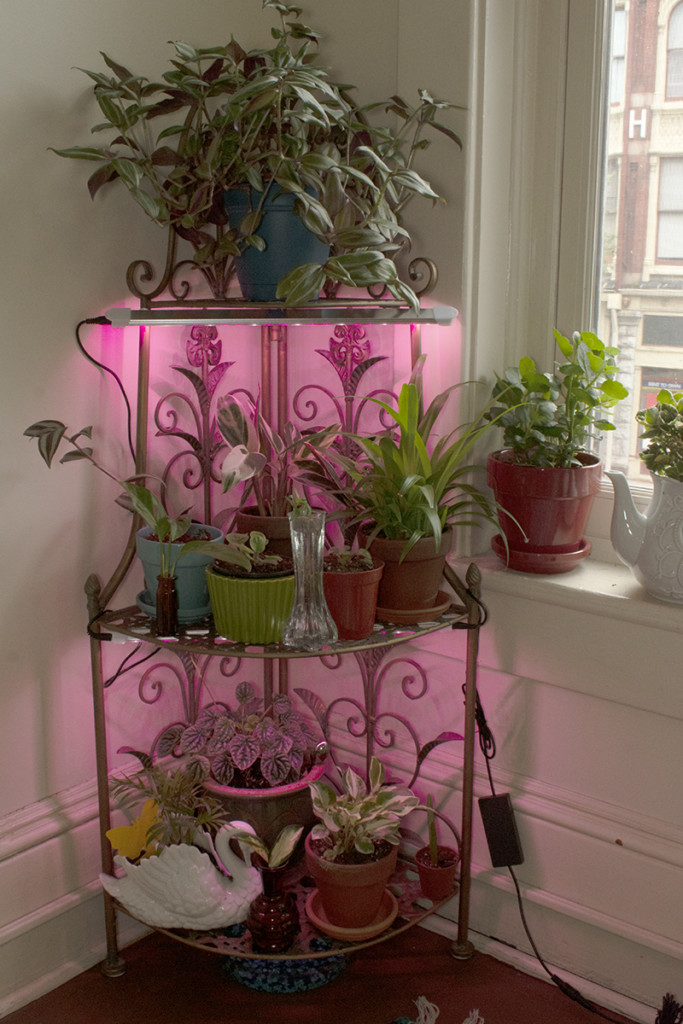
For larger plants, try adding a grow light floor lamp. Or put a grow light bulb into an existing floor lamp.
Setting up a couple of grow lights is a good idea anyway.
In the winter, when the days are shorter, you can rotate plants beneath the lights to give them the extra daylight hours they’re missing.
In the end, I think you’ll agree that having a low-light area in your house isn’t the end of the world.
As you can see, there are plenty of beautiful and interesting houseplants to choose from that will green-up your home.
Knowing what your options are, you could have some kind of plant in any room with a window in it. And this list isn’t exhaustive by any means; there are simply far too many low-light loving plants to list them all here.

Get the famous Rural Sprout newsletter delivered to your inbox.
Join the 50,000+ gardeners who get timely gardening tutorials, tips and tasks delivered direct to their inbox.


